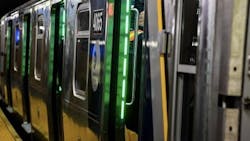MTA releases final 2026 operating budget, four-year financial plan
The Metropolitan Transportation Authority (MTA) released its final 2026 operating budget and four-year financial plan. The 2026 operating budget and four-year financial plan introduces a new round of operating efficiencies over the next four years that significantly reduce the agency’s year deficits announced in the July Financial Plan by a total of $418 million. According to the MTA, new cost savings of $675 million raises the cumulative total to more than $2 billion in operating savings through 2029.
“In 2021, the MTA was looking at a $2.5 billion annual deficit, but we have been able to get back on track thanks to the amazing support from Albany,” said MTA Chair and CEO Janno Lieber. “That support allowed us to stay afloat without cutting service, without any layoffs; and another major factor in this agency's fiscal stability has been the cost savings that we've achieved in recent years.”
The plan shows a continued balanced operating budget for 2026 and reduces the projected deficit for 2027 by approximately half, from $345 million to $160 million, with additional deficit reductions in 2028 and 2029 thanks to a new round of operating efficiencies the MTA has identified. The plan forecasts $75 million more in operating efficiencies for 2027; $150 million for 2027; $200 million for 2028; and $250 million for 2029, totaling $675 million in new cost savings. This is in addition to the annual recurring savings of $500 million MTA is on track to achieve this year, originally reflected in the 2022 November Financial Plan.
“The MTA has kept real costs below 2019 levels and through these new cost savings, continues to meet the challenge of identifying new operating efficiencies to further reduce out-year deficits,” said MTA Chief Financial Officer Jai Patel. “We’ll continue to make smart financial decisions that ensure long-term budget stability, while delivering reliable service customers can count on.”
The MTA says it has identified new cost savings through a variety of improvements, including savings achieved from transitioning to Tap and Ride, lower maintenance costs with the rolling deployment of newer and more reliable subway and rail cars, optimization of railroad train crew schedules and other identified efficiencies of internal processes across all agencies. These changes improve MTA operations and set up the authority for long-term savings.
According to the MTA, revenue and expenses are on budget for 2025. Farebox revenue is tracking to budget, primarily driven by stronger farebox performance from the commuter railroads and overall operating expenses remain below budget.
